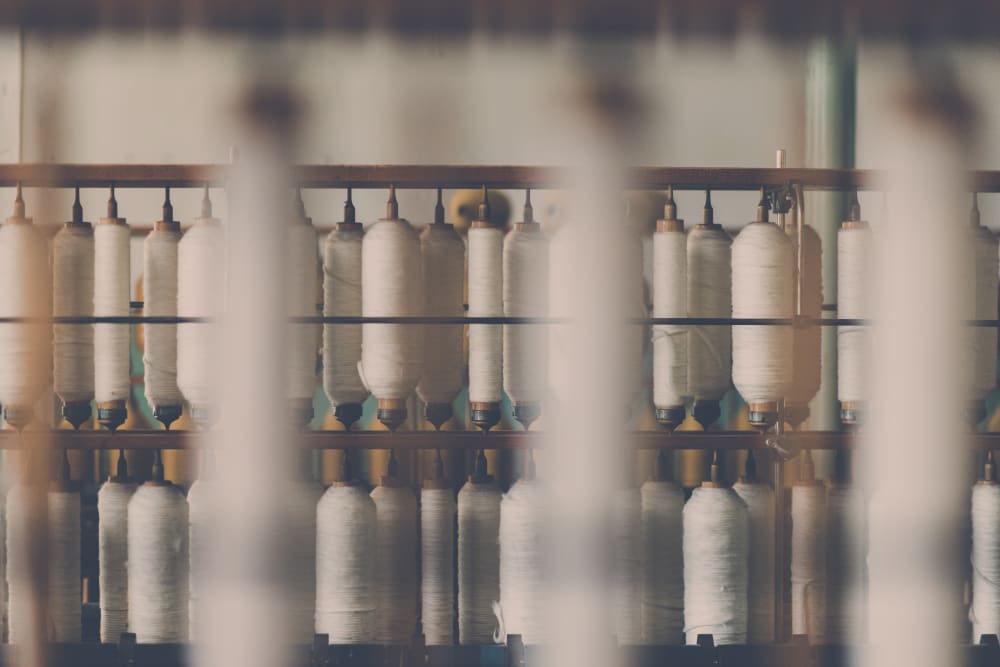Cotton has been a staple used in the fashion industry for decades, with cotton fibre having been discovered from as early as 5000 B.C. (Cotton Australia). In 2021 the total global supply of cotton, stocks included, stood at approximately 247.6 million bales, where a bale can weigh up to 200-300 kgs.
In recent years, organic cotton has seen an increase in demand, due to more information coming to light about the negative impact of cultivating conventional cotton. For example, conventional cotton is generally recognised as a very water intensive plant, with estimates that it can take up to 2,700 litres of water to produce a single cotton t-shirt (WWF). The mass cultivation of conventional cotton has also caused soil degradation in many parts of Central Asia and it can also be highly polluting due to the use of toxic pesticides and fertilisers.
Here at Curobe, we want to demystify the sustainability of fabrics and to make it easier to understand the benefits of more sustainable and responsible materials. In this quick guide, we will be focusing on ‘organic cotton’.
The Manufacturing Process
Cotton fabric generally goes through six key stages in manufacturing, which includes growing, ginning (which involves separating the cotton fibres from their seeds), spinning, dyeing, weaving and construction, then distribution. Compared to conventional cotton, some of the key differences in manufacturing organic cotton occurs during the growing and dyeing processes.
Organic cotton is grown without the use of harmful and toxic chemicals, which can be present in certain pesticides and fertilisers. As cotton naturally comes in a beige colour, certified organic cotton fabrics are also dyed using low impact or natural dyes.
Properties
As a natural material, 100% cotton fibres are biodegradable. It is a light weight and absorbent fibre that is also breathable, which makes it a popular option for many different types of garments and textiles, from underwear, to sportswear, sleepwear, office wear and bedding.
Cotton’s versatility has made it one of the most popular fibres in the world, with nearly 75% of the world’s clothing products containing some cotton. You may often find cotton mixed with some other fibres to give it some additional properties. For example, polyester is often added to give durability and wrinkle-resistant properties or wool to provide extra warmth and weight.

Environmental Impacts and Benefits
Organic cotton compared to conventional cotton is manufactured without the use of harmful chemicals, which makes it safer for the skin and is considerably softer. Some studies suggest that this reduces the greenhouse gas emissions of organic cotton by around 46% compared to conventional cotton (Soil Association). The absence of toxic pesticides and fertilisers also mean that there is generally better soil health and any wastewater and runoff from organic cotton farming is also less polluting for the surrounding environment.
There are a number of certifications which can give you assurance that the products you buy are organic and that no dangerous chemicals were used in manufacturing the cotton. These certifications help give comfort that testing has been carried out to ensure the organic origins of the fibre and that the term is not simply used as a greenwashing exercise (see our last blog on greenwashing by clicking here). Look out for certifications such as GOTS (Global Organic Textile Standard) when buying organic cotton garments, so you can be confident that it is more environmentally friendly.
Costs and Recyclability
Cotton can be recycled and when untreated, it is biodegradable. Pure cotton fibres can also go through chemical recycling, an emerging technique where the fabric is dissolved in chemicals in order to be turned back into cellulose and spun into yarn.
The cost of organic cotton is also slightly higher than that of conventional cotton, but that is due to the naturally higher cost that organic production demands. More natural processes and methods are used in the growing of the cotton, for example in managing weeds and insects, which usually involves more time and effort compared to the use of toxic chemical products. Organic cotton fibres are also dyed using non-toxic or natural dyes, which costs more than synthetic alternatives.
Like what you just read? Share it on:

